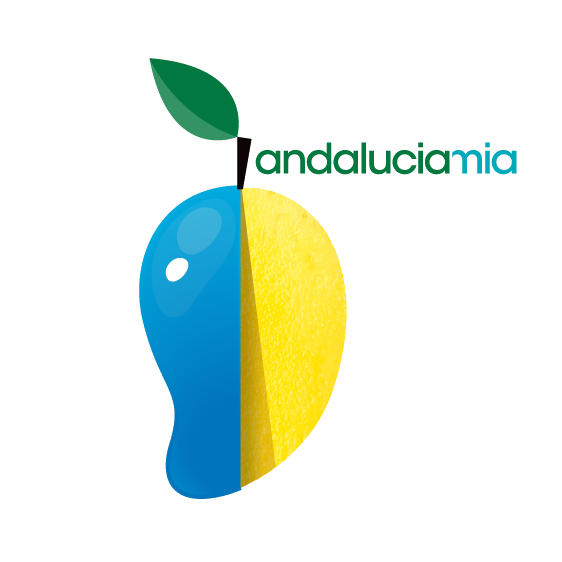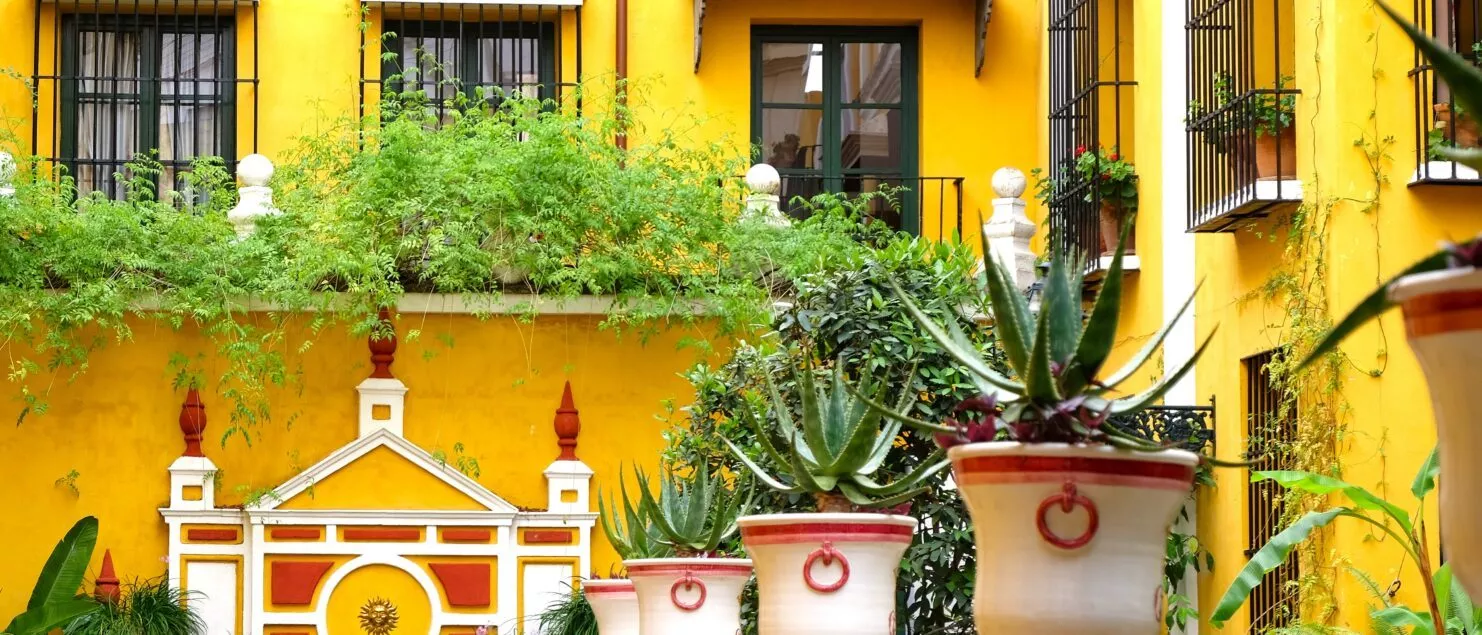Santa Cruz Seville the best to see in this famous neighbourhood
Visit to the Santa Cruz neighbourhood and the Jewish Quarter of Seville
In this article, you will find essential information about the best to see in Santa Cruz neighbourhood of Seville:
- A few words about the history of the Santa Cruz district and the juderia
- Where is the Santa Cruz district?
- Visit the neighbourhood and its essentials
- What to see and do in Santa Cruz?
- Tapas and flamenco
- Activities to book in Seville
- Some useful links for your trip
- What to see in Seville after Santa Cruz and the juderia
- Continue the trip to Andalucia
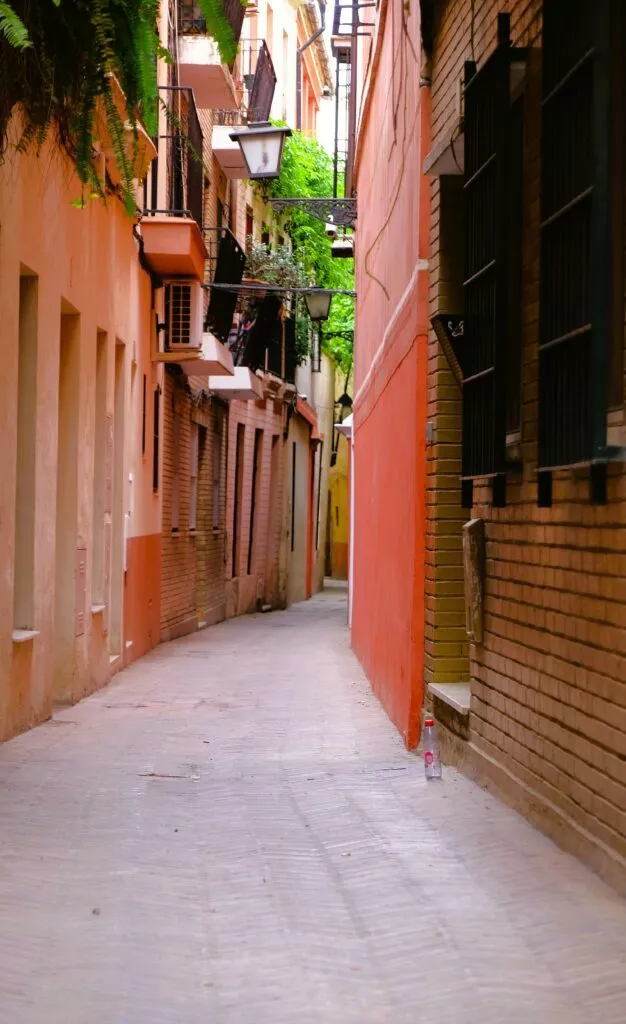
A few words about the Santa Cruz district of Seville
The Santa Cruz district of Seville is a historic and picturesque neighbourhood located in the heart of the city. It is known for its narrow, winding streets, whitewashed houses and flower-filled patios, courtyards.
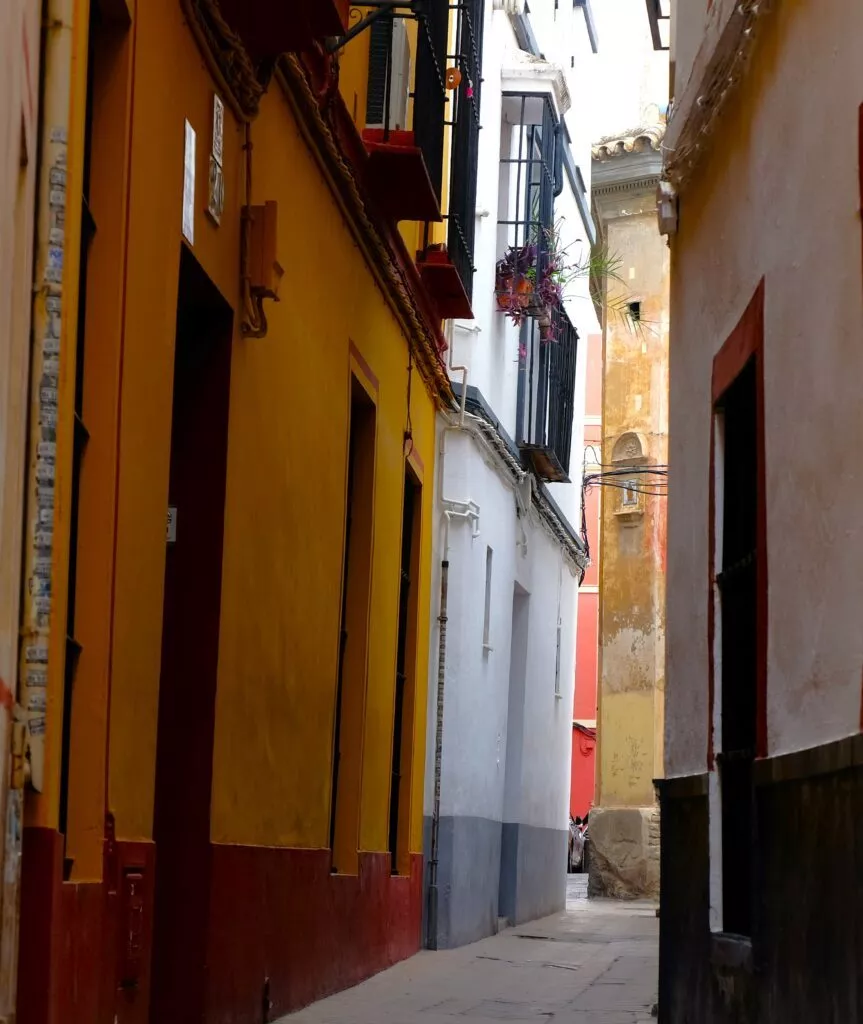
In this district there are also some magnificent stories and treasures that we will discover, including the old Jewish quarter of Seville which is largely located in Santa Cruz.
A few words about the juderia, the old Jewish quarter of Seville
The Judería of Seville is a historic district of the city, located in the heart of the old town. It is one of the oldest districts.
There is evidence of a Jewish presence in Seville since Roman times, and this continued through the Visigothic and Muslim periods. However, the expulsion of Jews from Al-Andalus ordered in 1146 caused their presence in the city to disappear. Many will take refuge in northern Spain.
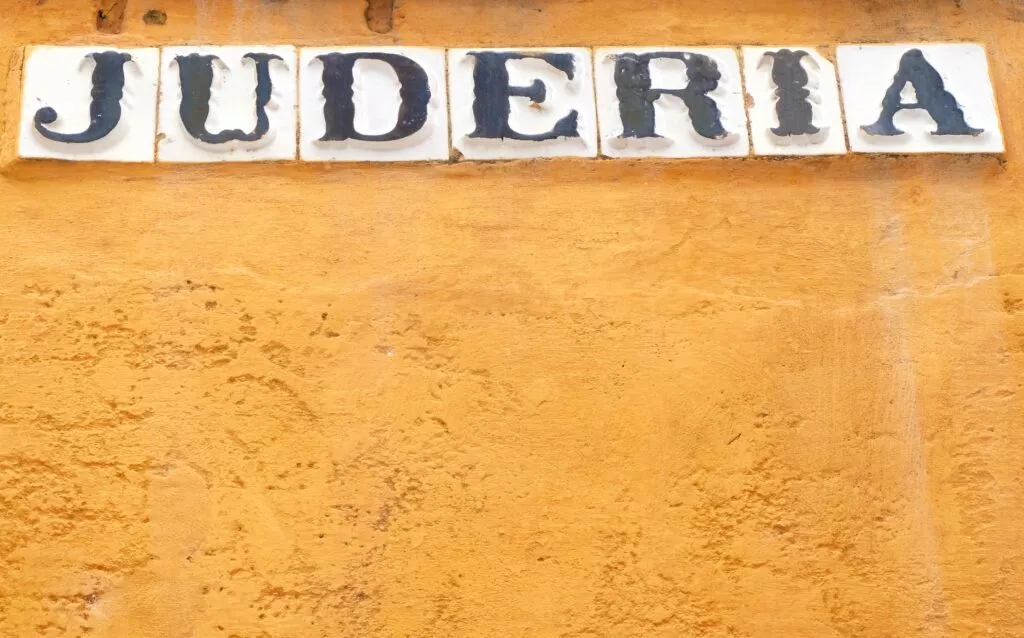
However, the juderia, as we know it, is the district of the city of Seville where the Jewish community settled after the conquest of Seville by Ferdinand III of Castile in 1248…until his expulsion in 1492, in under the Edict of Granada of the Catholic Monarchs.
Note: shortly after the conquest, King Alfonso X granted four mosques to be converted into synagogues. They correspond to the current churches of Santa María la Blanca and San Bartolomé, the ancient church of Santa Cruz and the convent of Madre de Dios.
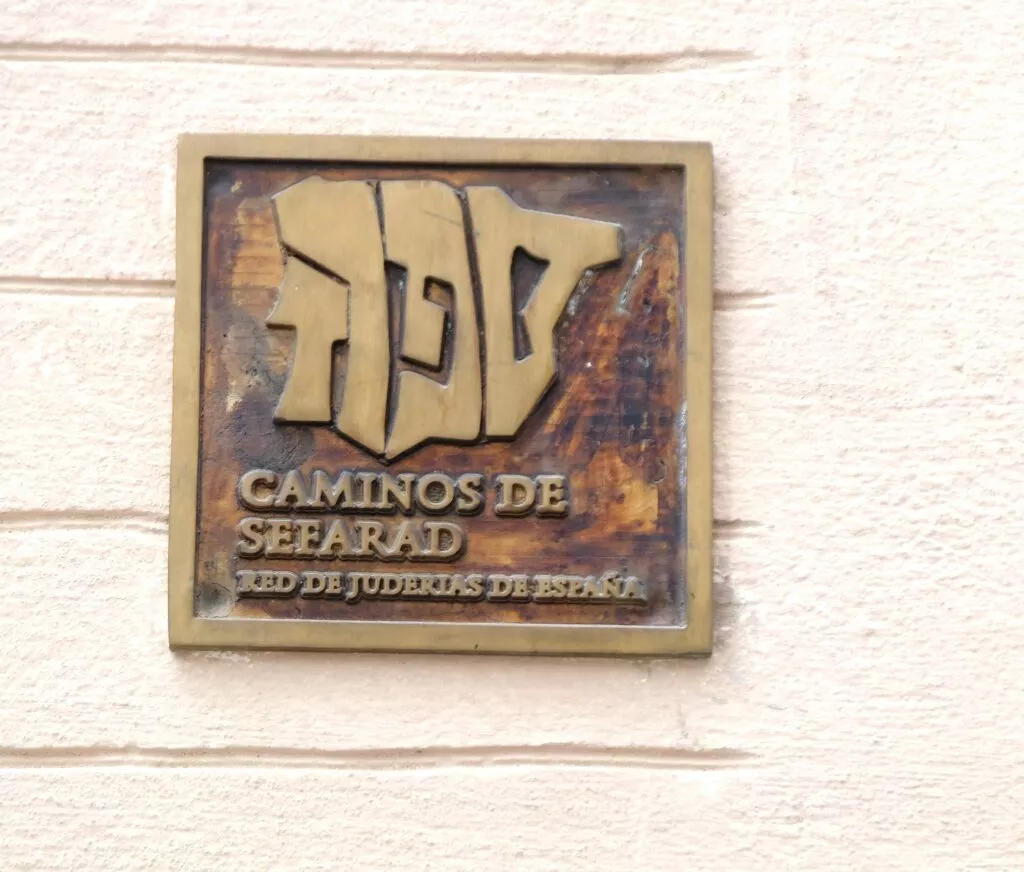
La Red de Juderias de España – the Network of Spanish Jewish Neighborhoods and Sephardic Ways – is an association made up of municipalities whose medieval sites have a historical, artistic, environmental and cultural heritage, heritage of the Jewish communities who inhabited them. The juderia of Seville is one of them.
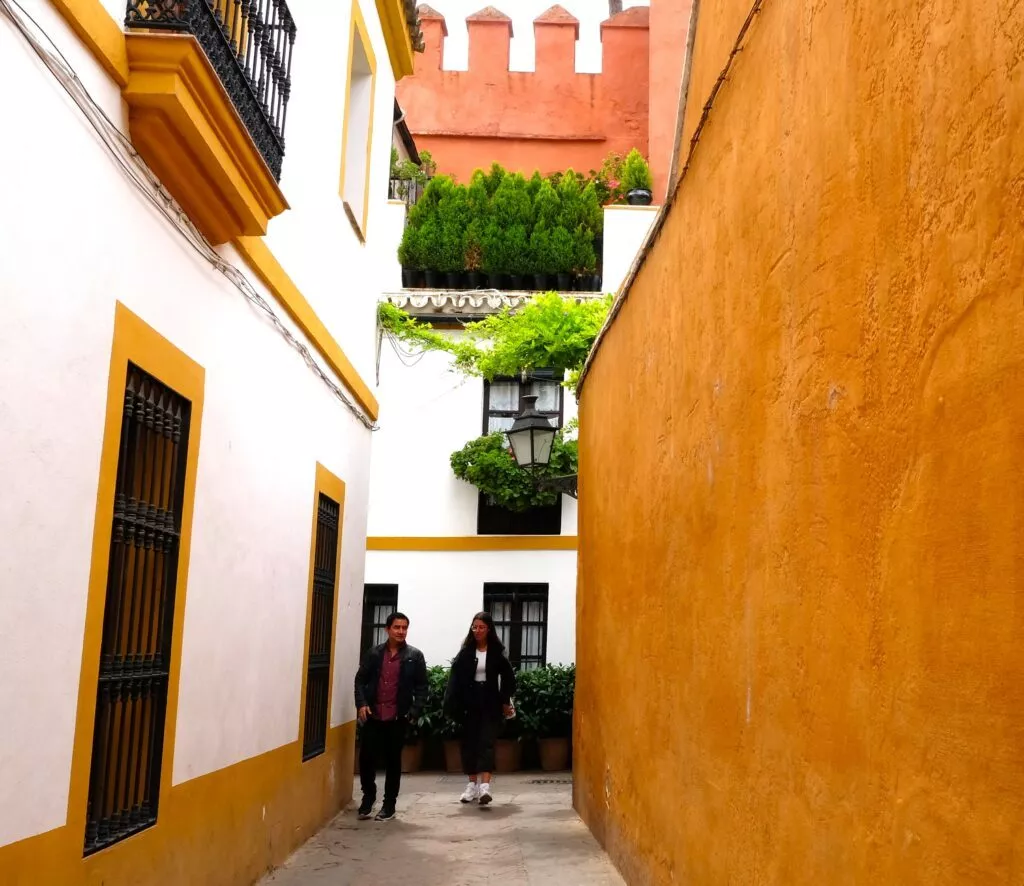
The Judería of Seville was decimated during the Spanish Inquisition of the 16th century. However, the neighborhood has retained its unique charm and character. Today it is a popular spot for visitors to Seville, and it is a UNESCO World Heritage Site.
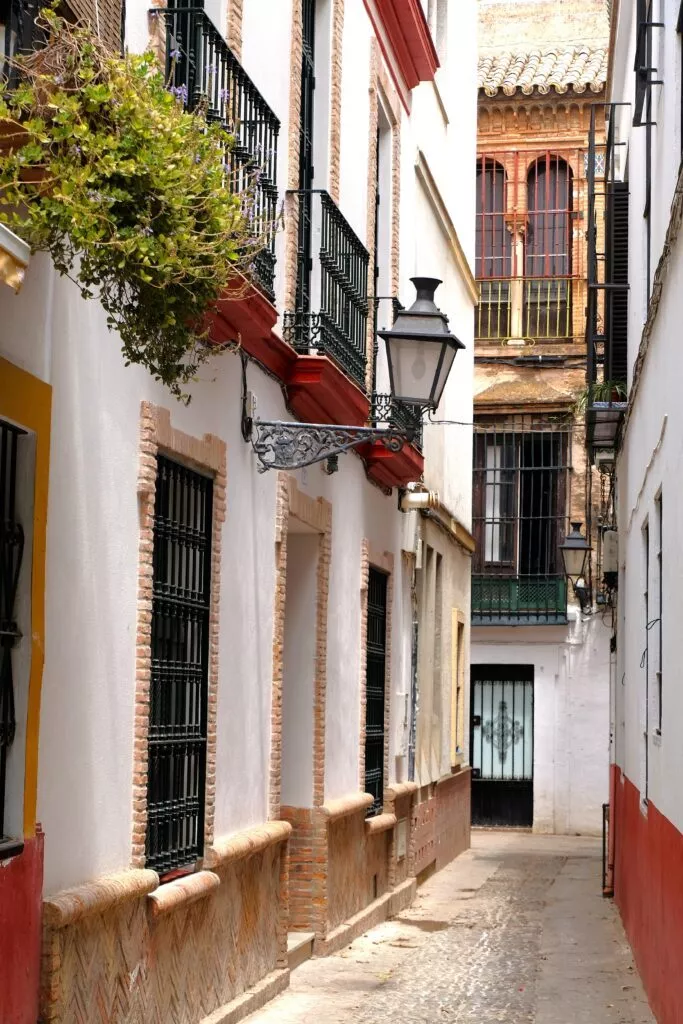
Finally, this juderia which is shared between the district of San Cruz and that of San Bartolomé, is the opportunity to discover and appreciate the Sephardic heritage of Spain.
Where is the Santa Cruz district of Seville?
The Santa Cruz district of Seville is located in the city center. It blends with the historic center of the Andalusian capital.
On the map the district is demarcated by red dotted lines:
What to see in the Santa Cruz neighbourhood of Seville and the Juderia
- The narrow streets of the juderia
- Callejon del agua
- The patios , courtyards
- The wall
- The statue of Don Juan de Tenorio
- The Church of Santa María la Blanca
- Reinoso Street
- The Patio of Banderas
- Calle Levies
- San Bartolome Church
- Tapas and flamenco in Santa Cruz
- Tablao Flamenco Los Gallos
- Freidura Puerta de la Carne
- Taberna La Sal
The narrow streets of the juderia, the city’s former Jewish quarter
There is no better way and no more beautiful moment than walking through the small historic streets of Santa Cruz.
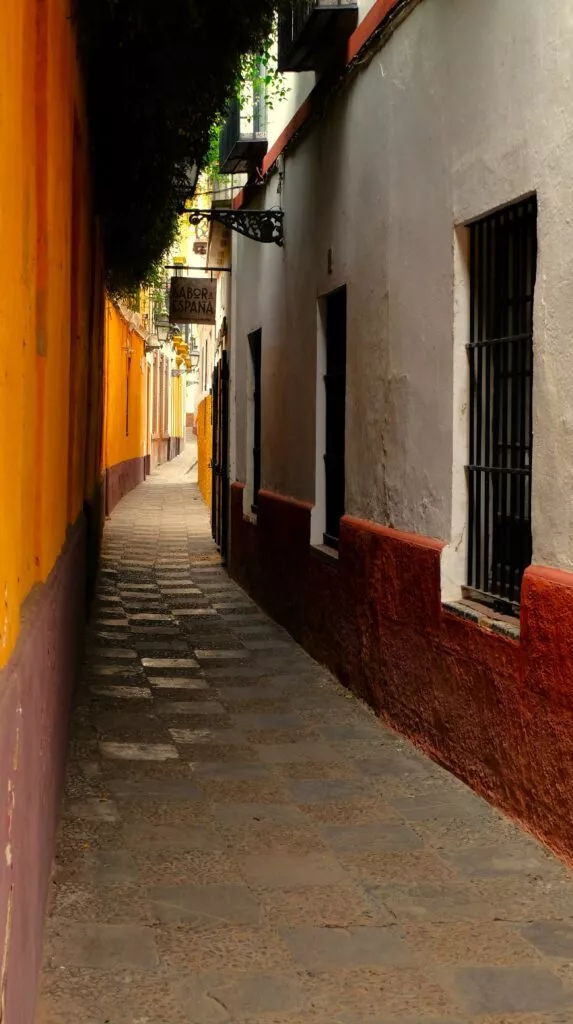
The walk allows you to get lost a little, with a certain happiness, in this labyrinth of narrow streets.
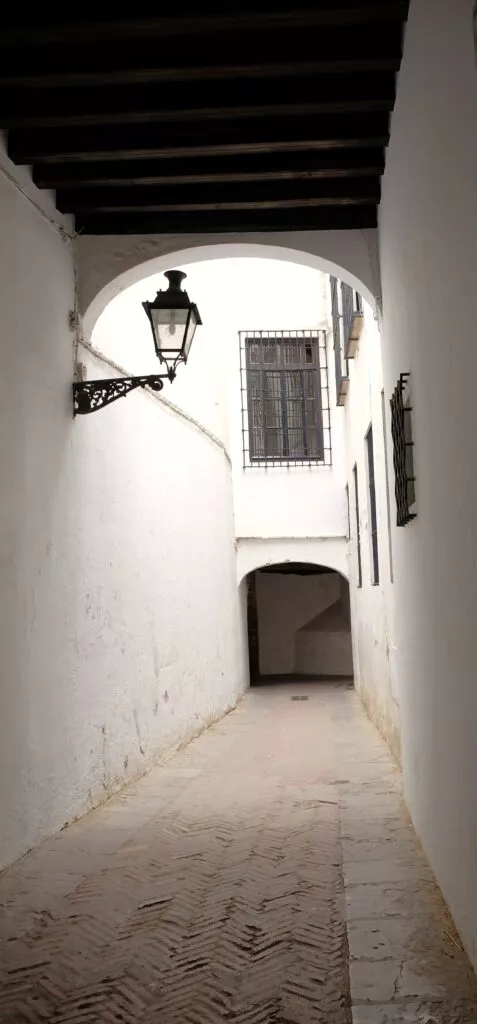
We even cross very beautiful small courtyards:
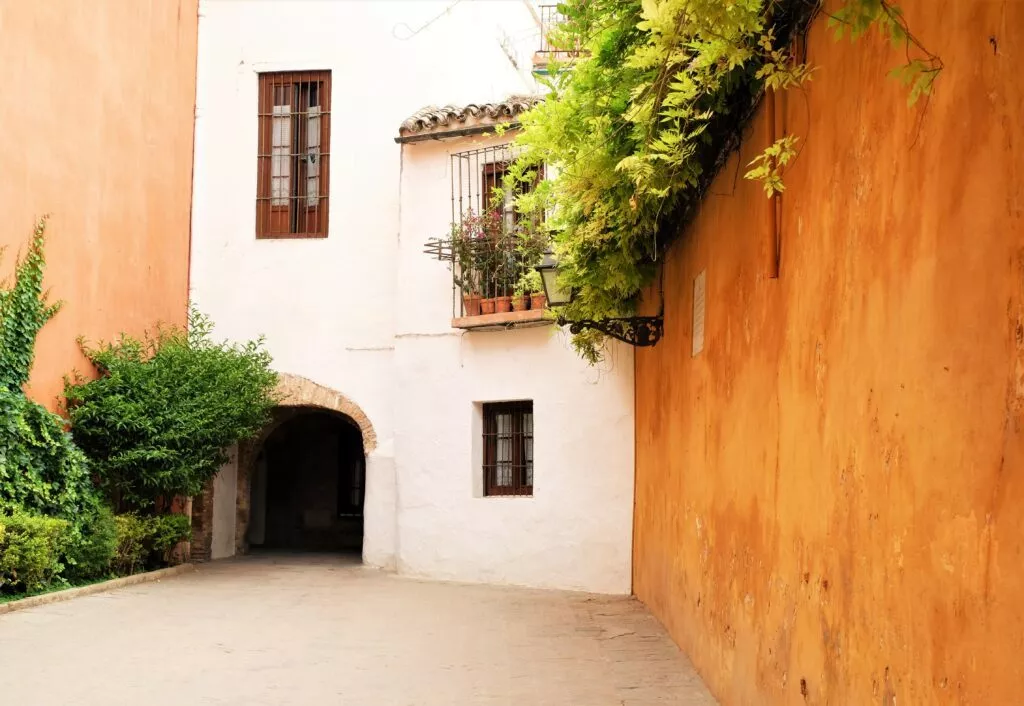
This courtyard as well as the passage that we see in the background of the photo are very well known. Indeed, one of the scenes from Bizet’s opera Carmen takes place in this place… when Carmen tries to escape the soldiers who are pursuing her.
At the end of the street below, a beautiful little hotel, close to everything: the Murillo hotel. From the roof terrace, where you can have a drink, you can enjoy an incredible view of the Giralda.
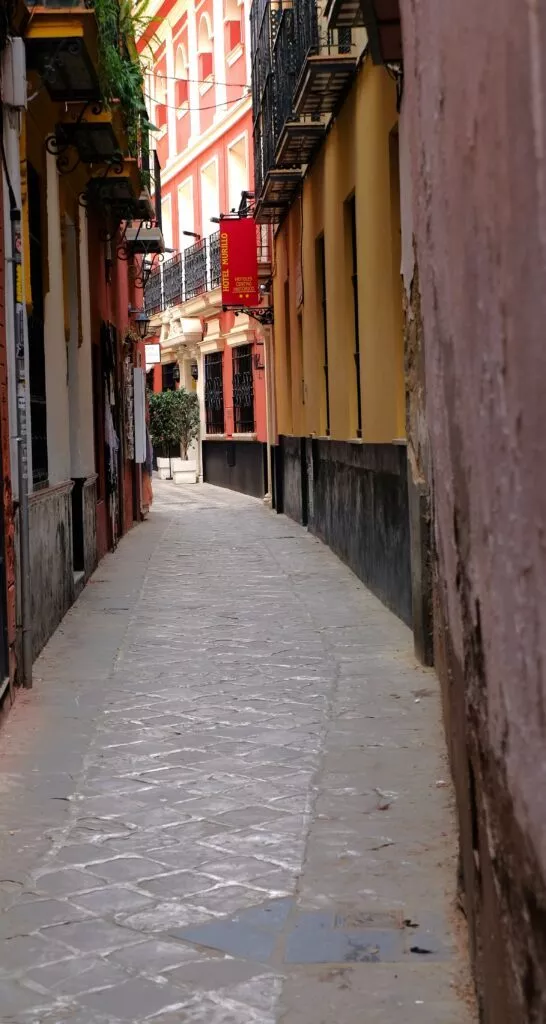
The callejon del agua a historical marvel to see in the Santa Cruz district of Seville
The Callejón del Agua – the water alley – is a narrow and winding street located in the Santa Cruz neighborhood.
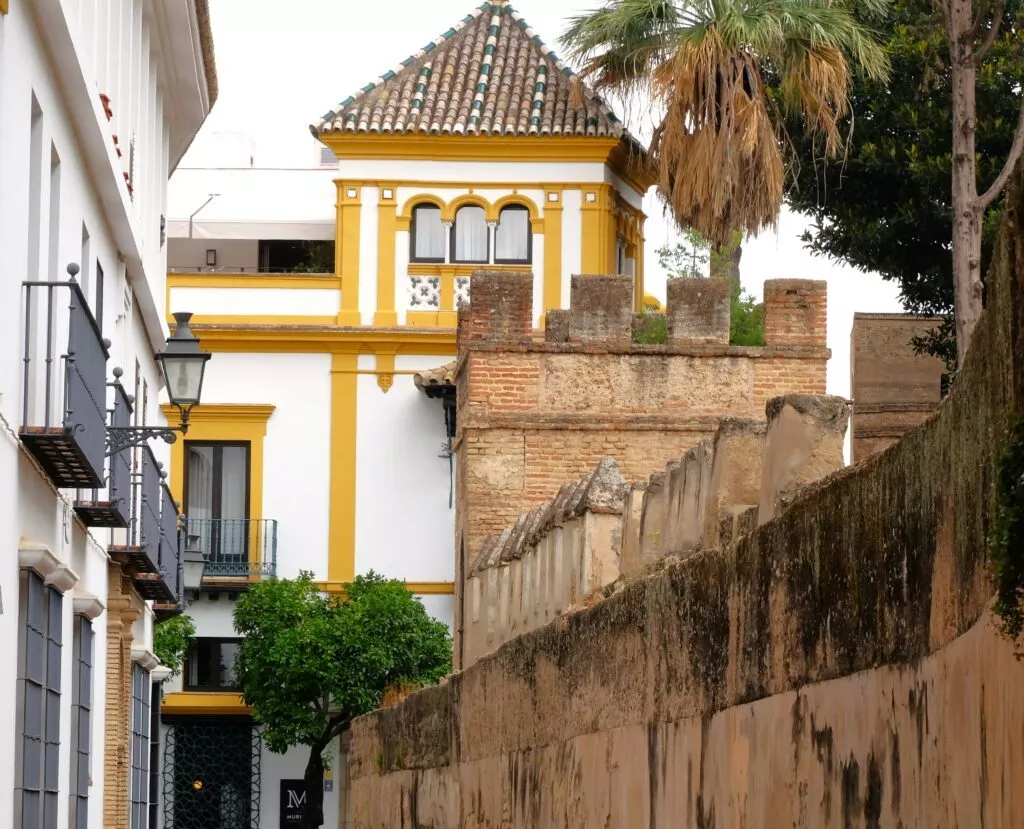
It is known for its whitewashed houses, its cascading flowers…
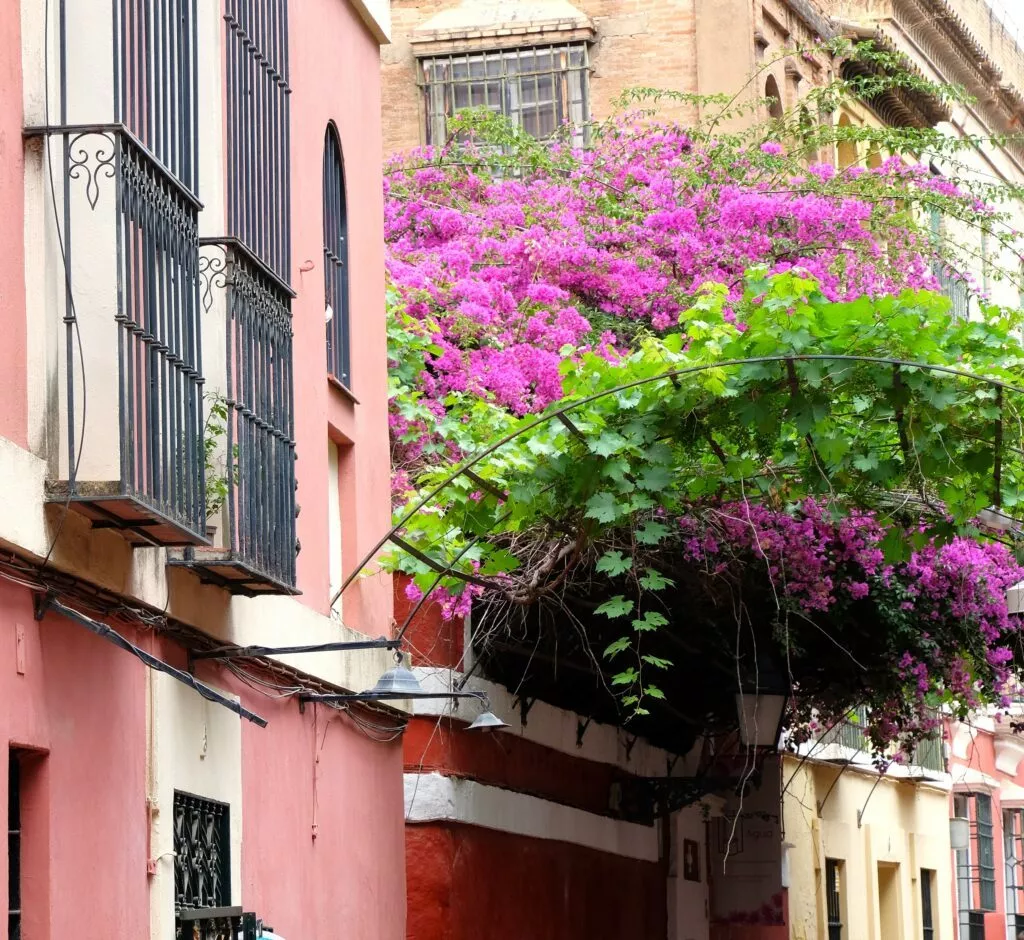
…as well as its romantic patios. It’s a great place to get lost and enjoy the vibe of the neighborhood.
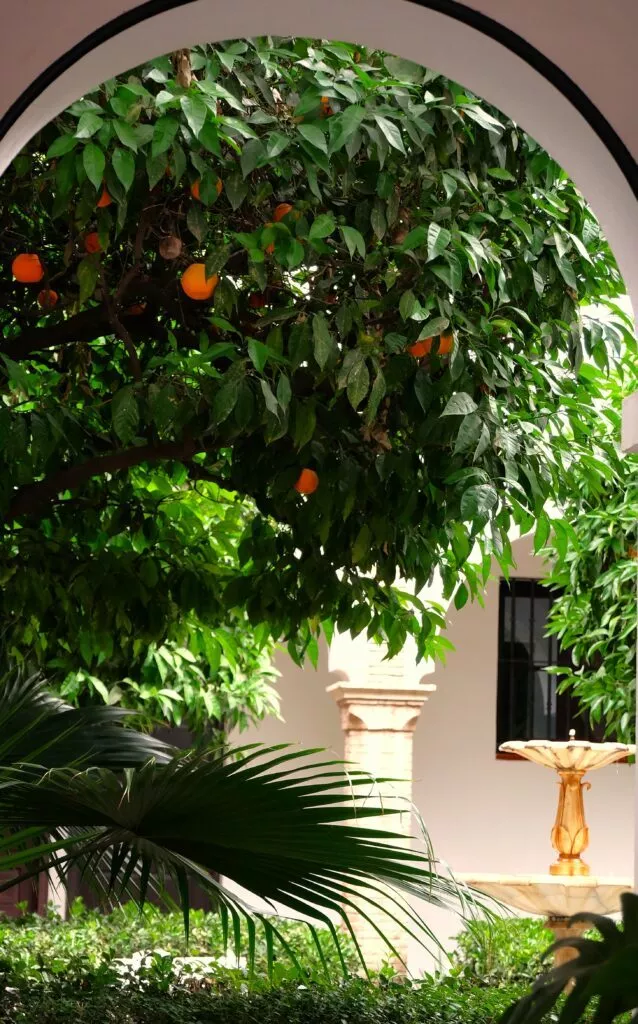
The origins of Callejón del agua: this alley runs along the old wall built during the Al-Andalus era, through which water was transported to the Alcazar.
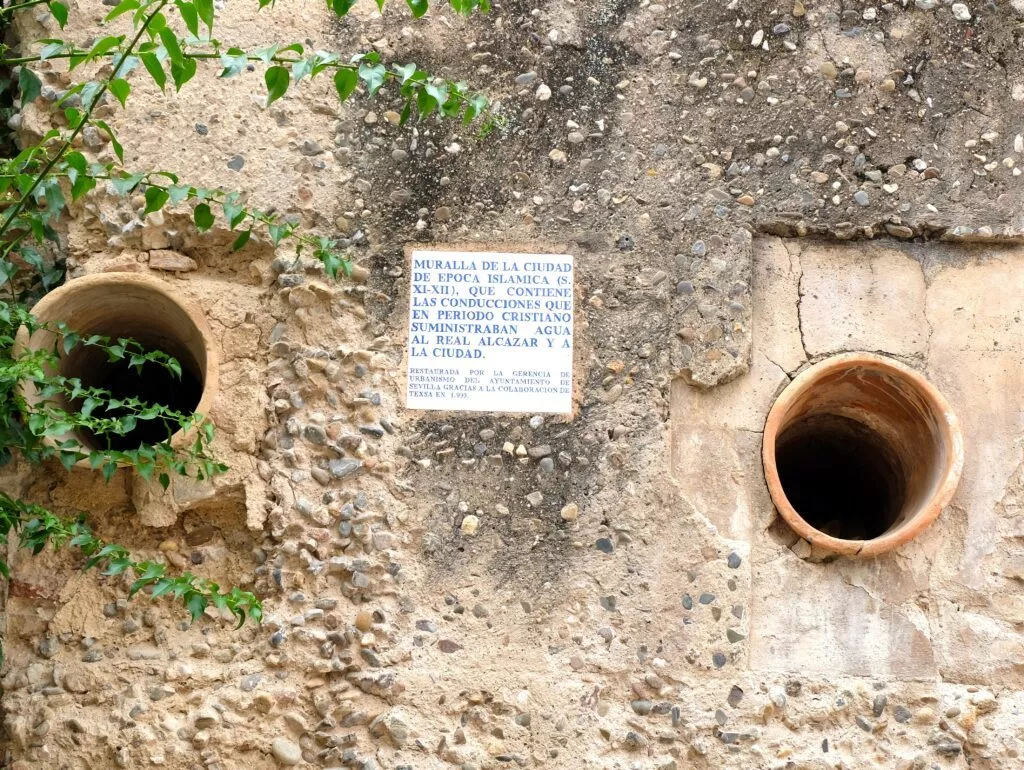
Below is the wall within which the water was channeled.
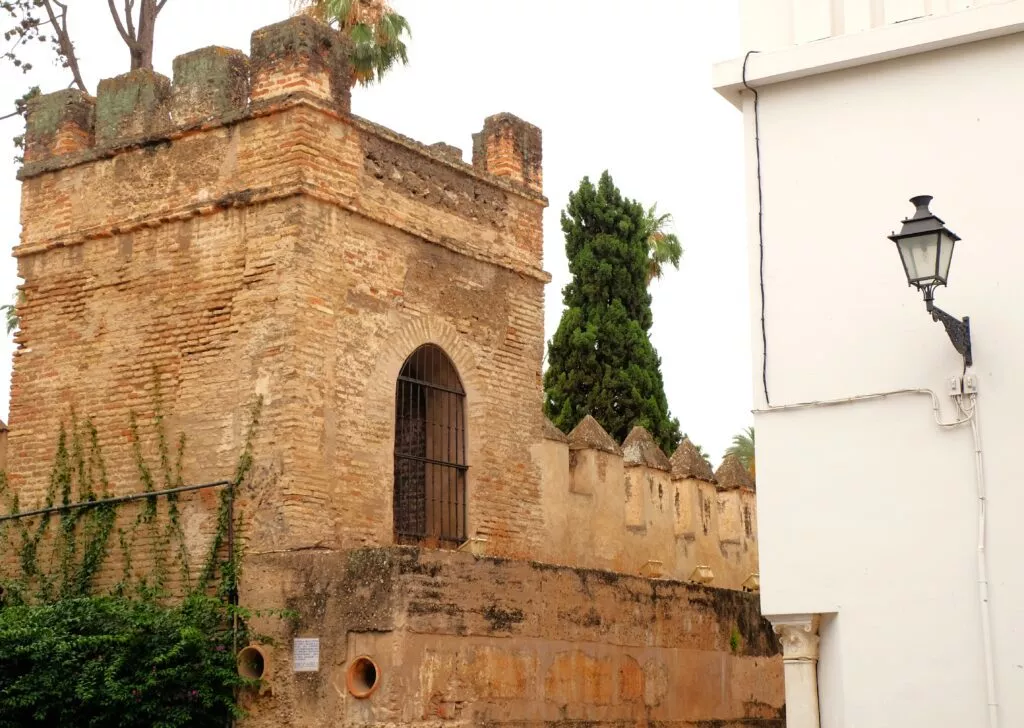
The statue of Don Juan de Tenorio
Here is the statue of the one we all know, through the use of the expression “Don Juan”. We use it to describe an attractive man, a conqueror, a libertine and a good lover.
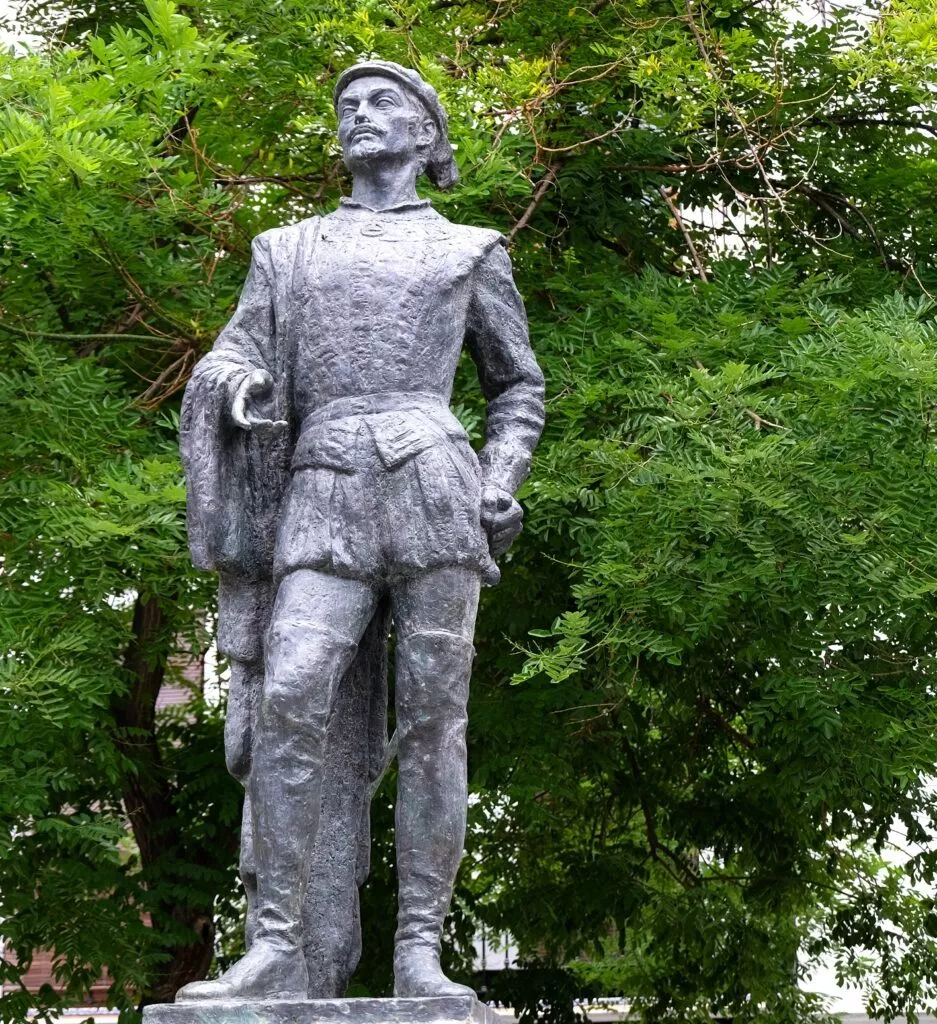
Don Juan is one of the most famous characters in Spanish literature, created by Tirso de Molina in the play “El Burlador de Sevilla el El Invitado de Piedra” in 1630. This book traces the story of Don Juan de Tenorio a young aristocrat who conquered hundreds of women throughout his life, promising them eternal love and marriage, but always ending up…disappearing for someone else.
Note: Mozart was greatly inspired (like Beethoven or others) by Seville and its legends for some of these works. For example, The Marriage of Figaro takes place in Seville, and its famous Don Giovanni is an interpretation of the famous life and story of Don Juan…
The Church of Santa María la Blanca a must-see in Santa Cruz neighbourhood of Seville
The Church of Santa María la Blanca is an absolutely magnificent church.
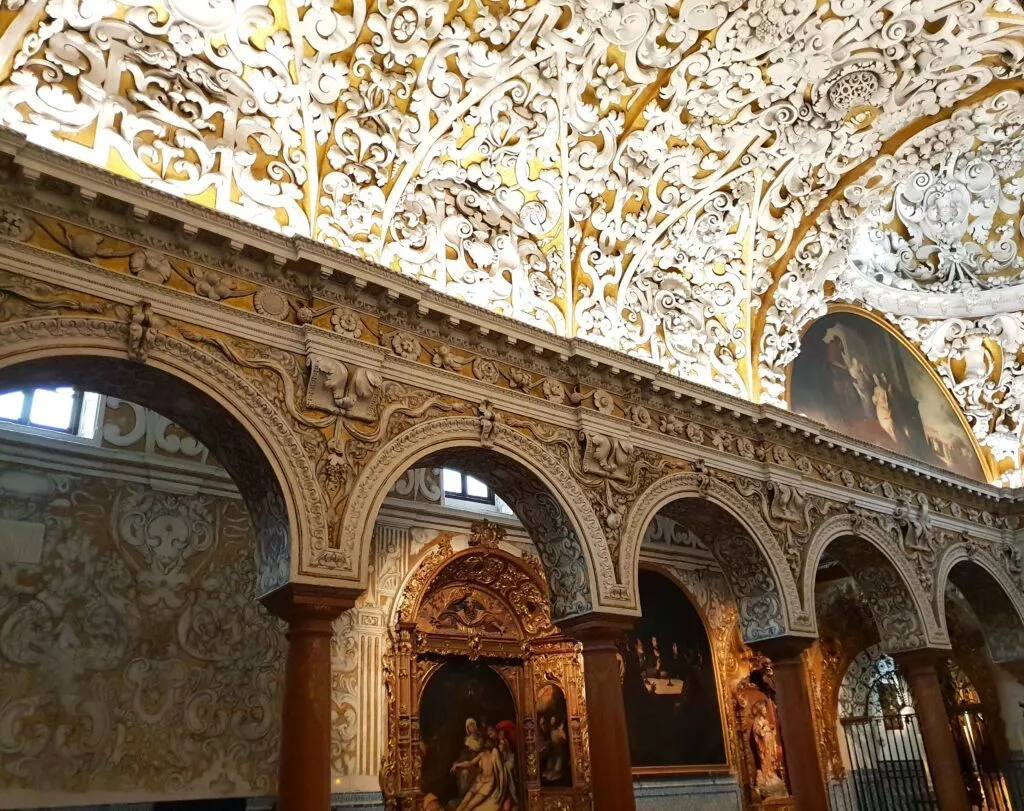
In addition to its beauty, the Church of Santa María la Blanca has a particularity. It was originally a mosque which after the conquest by the Catholic kings was transformed into a synagogue and then into a church.
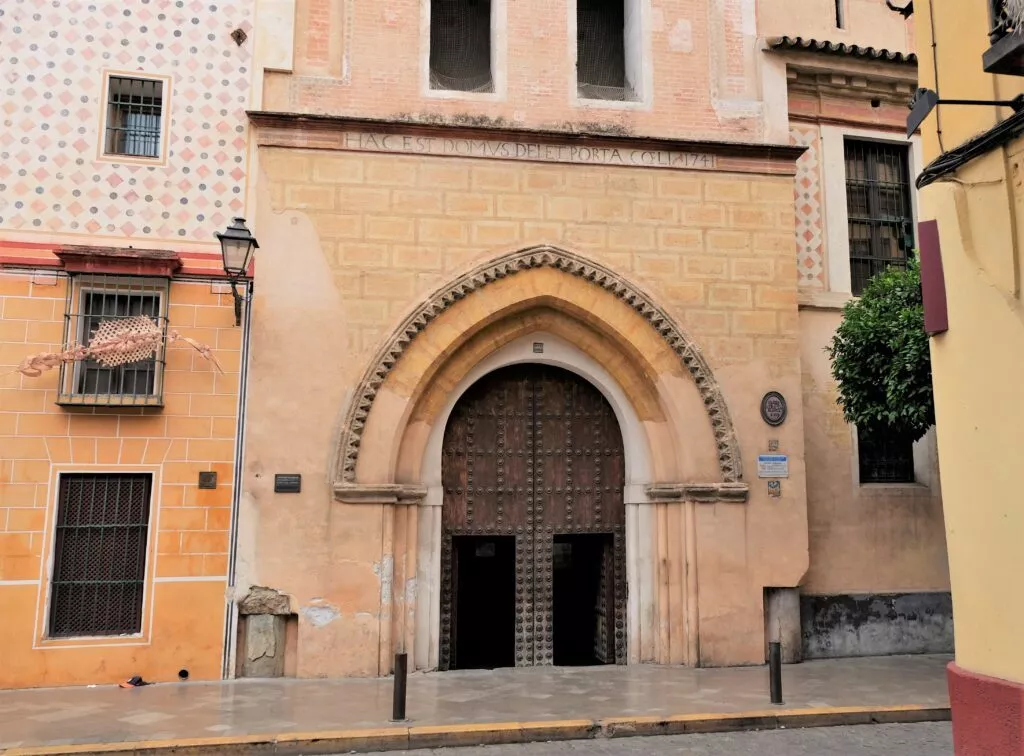
The church is located on Calle Santa María la Blanca, which is a cobbled pedestrian street lined with shops, restaurants and bars. It’s a great place to walk around and enjoy the neighborhood’s lively atmosphere.
Reinoso Street a curiosity to see in the Santa Cruz district of Seville
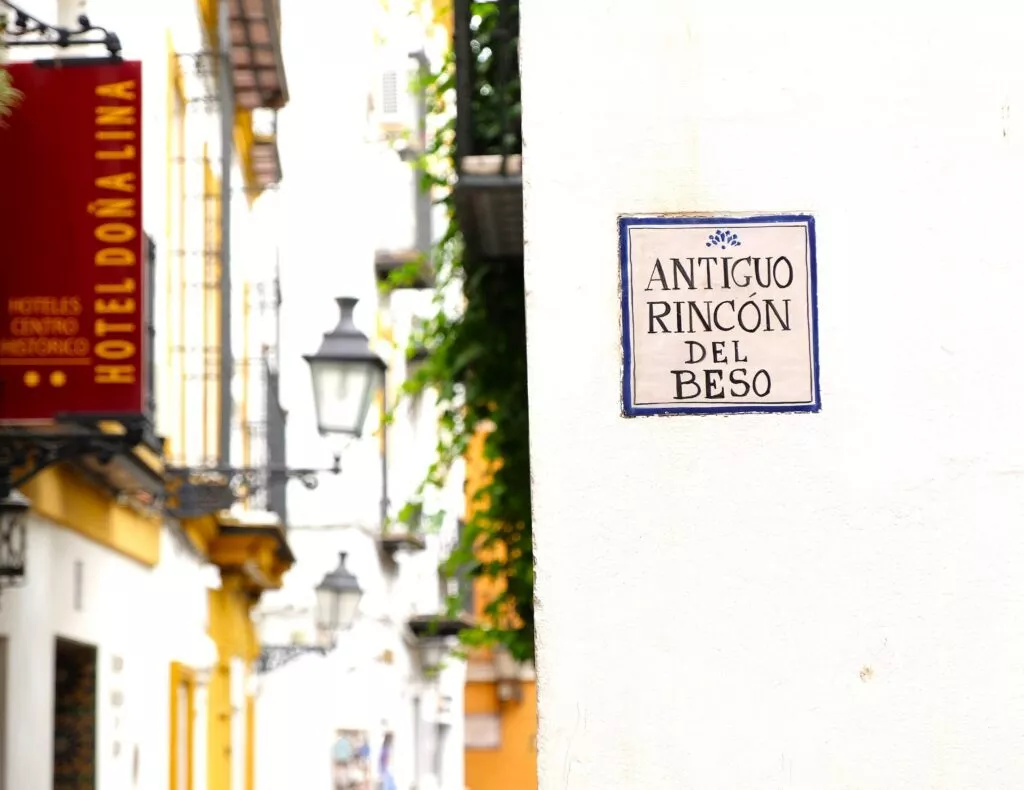
Calle Reinoso has a particularity: it is the narrowest street in Seville. This earned it the nickname Rincón del Beso, because it is said that from one balcony to another the neighbors can kiss each other…. A beautiful little street to discover.
The Patio of Banderas
The Patio de Banderas – the patio of flags – is a public square in the Santa Cruz district of Seville. It is located within the walls of the Alcazar of Seville. It is accessed through a passage from Judería Street.
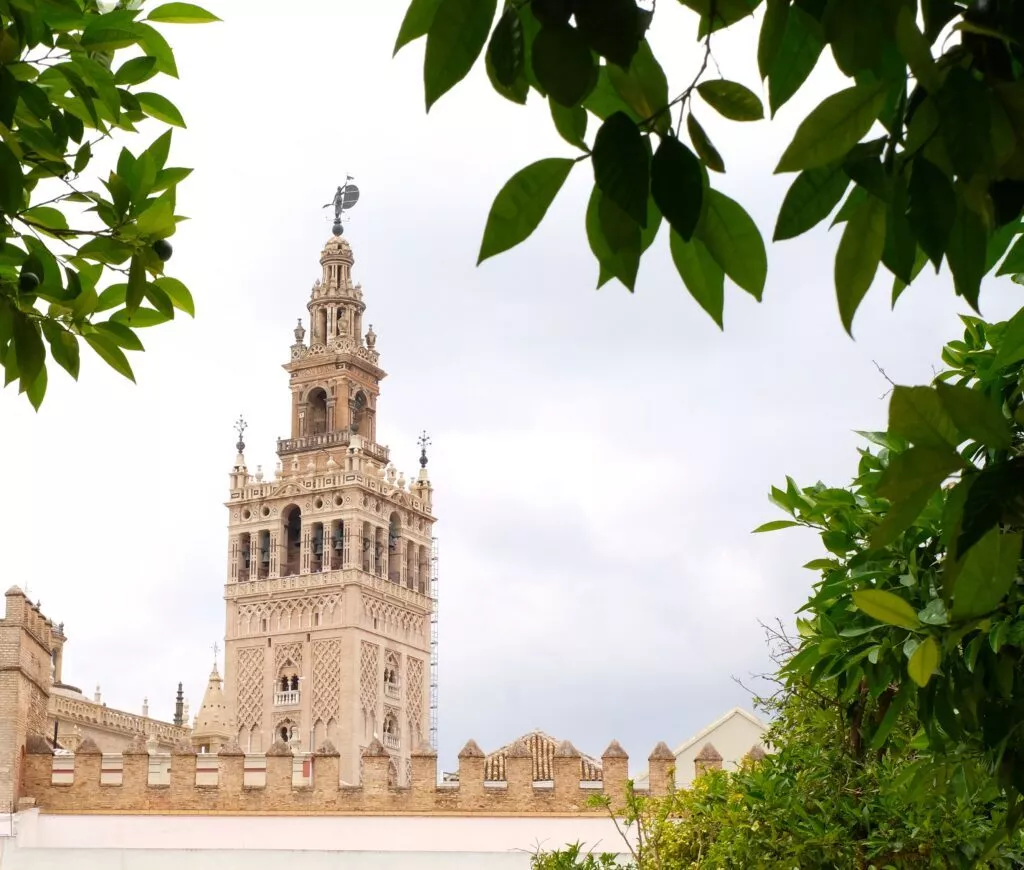
Despite the appearances of this place, with a very simple decor, it hides some treasures:
- remains of a Christian basilica were discovered in the basement, which could date back to the 4th century (used in Roman and then Visigothic times)
- in one of the buildings, at number 8, remains of the palace of the poet-king Al-Mutamid were discovered.
Note: Al-Mutamid, was the emir of the kingdom of Seville from 1069. At that time the kingdom of Seville (after the fall of the Caliphate of Cordoba) extended from the south of Portugal (where he was also born ) to the region of Murcia! This emir – the last Abbadid emir – is known not only for his conquest talents to expand his kingdom but also for his poetic qualities, which earned him the nickname of poet-king. He ended up forcibly exiled to Morocco by the Almoravids who conquered his kingdom in 1090.
Calle Levies and its surroundings
This very beautiful street is part of the Juderia of Seville and is located precisely in the San Bartolomé district. You can see the Palacio de Mañara, a palatial house which dates from 1540. However, only the facade and the Tuscan marble columns around the entrance remained identical to this period.
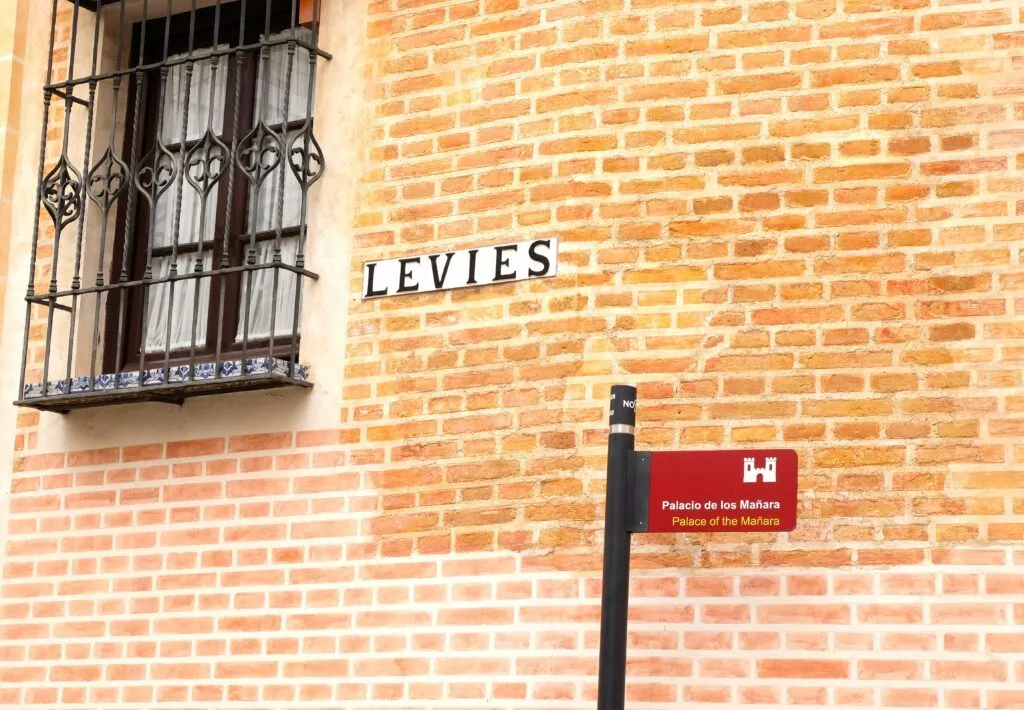
Inside this palace, there is a patio of infinite beauty. This building has had various destinies. Indeed, if it served as a private residence for several members of the Mañara family, it was also used for military, industrial, religious and also educational purposes as a school. Today it belongs to the Junta de Andalucía, and houses the Andalusian Cultural Heritage department.
Levies Streets also offers some striking perspectives:
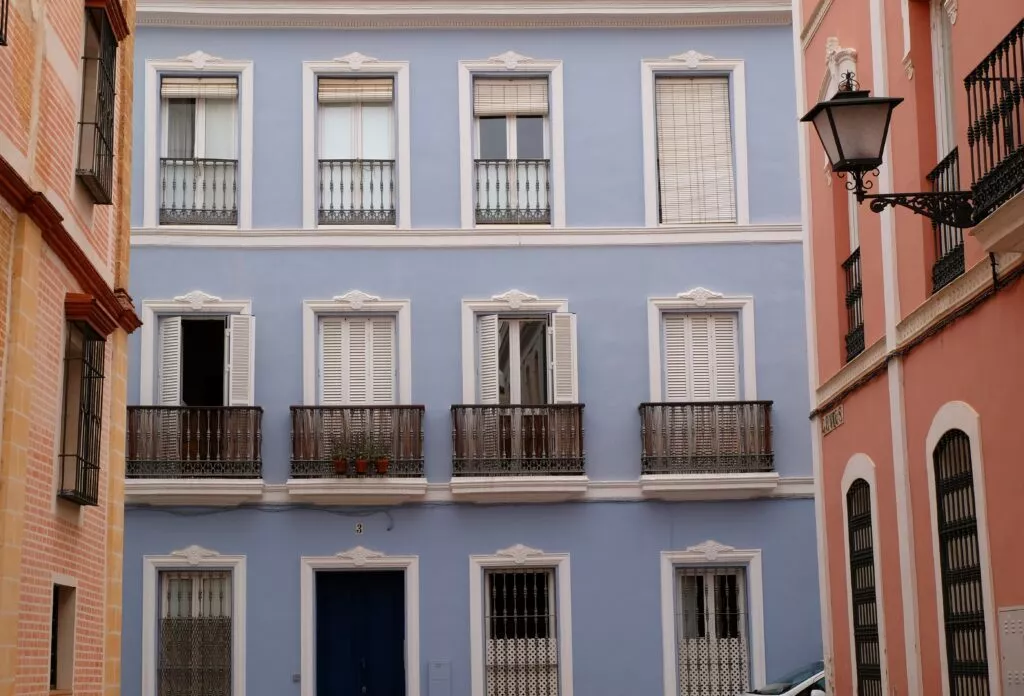
Not far from Levies Street, we can reach the San Bartolomé church. It is a Catholic parish church in the city of Seville.
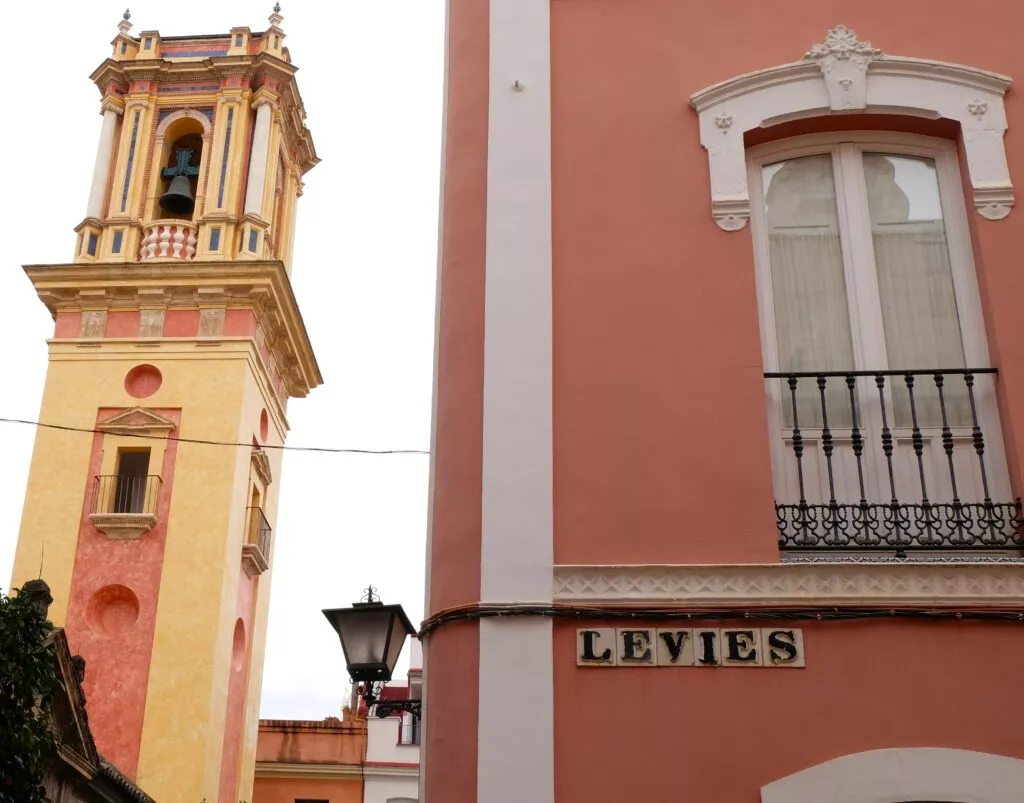
It was built between 1780 and 1796, on the site of an old synagogue which was then in a state of ruin.
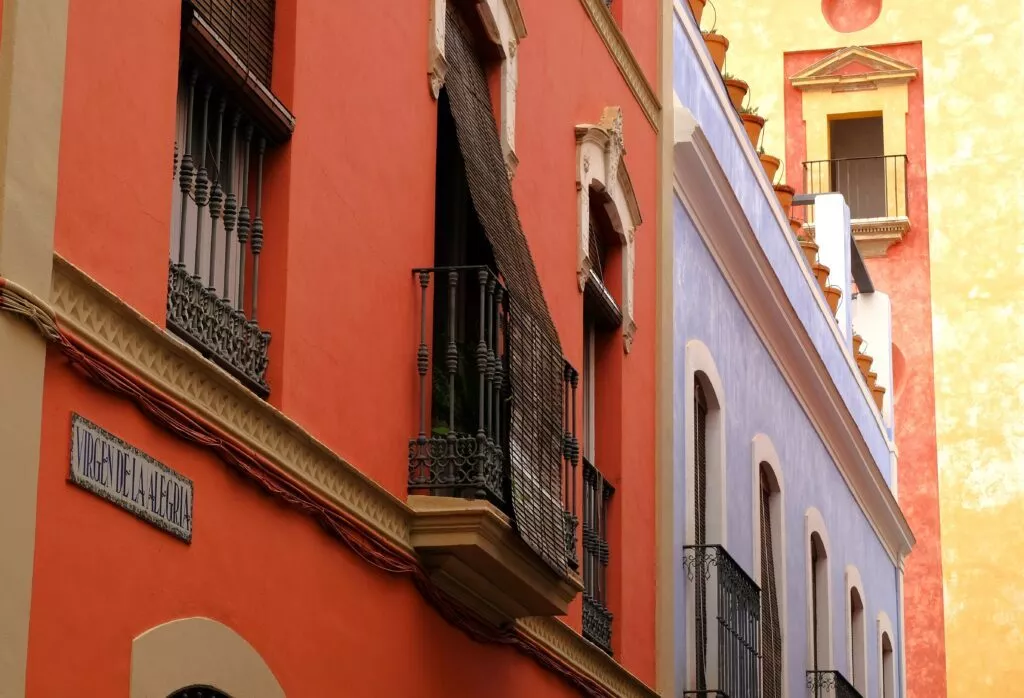
However, arriving at the church via Calle Virgen de la Alegría offers a magnificent array of colors.
Visit Santa Cruz and the juderia…head in the air and discover little wonders to see
Exploring the neighborhood on foot allows you to discover hidden gems as we have just seen.
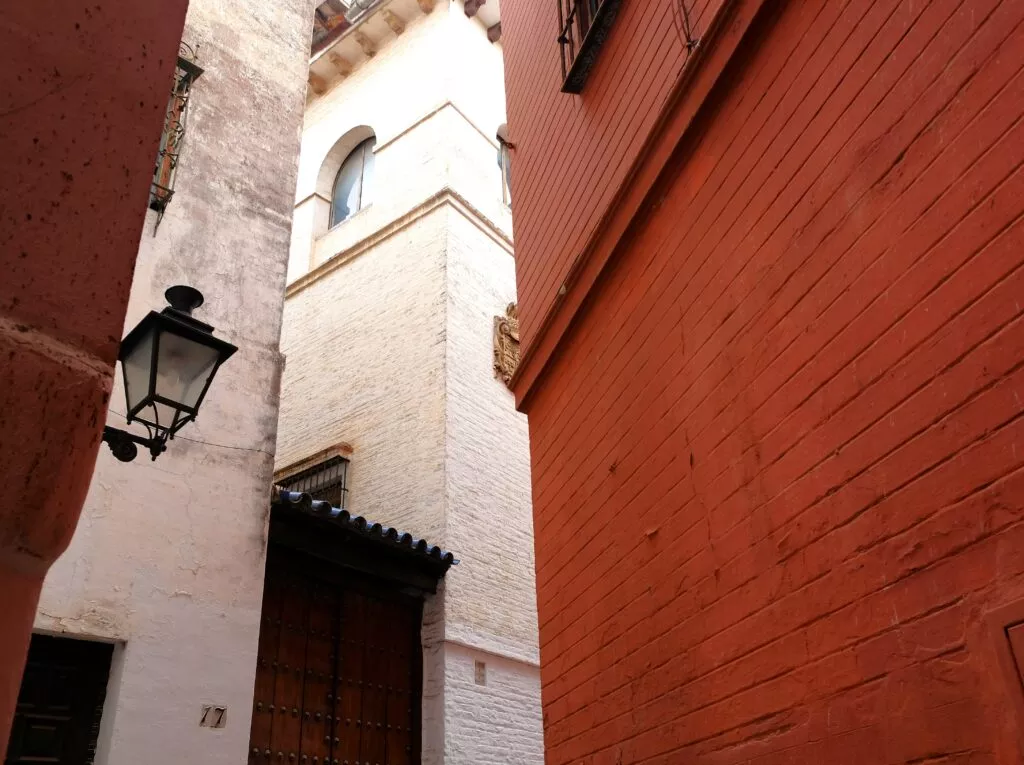
And, even with our heads in the air, we find, we see, very beautiful things in Santa Cruz and in the juderia.
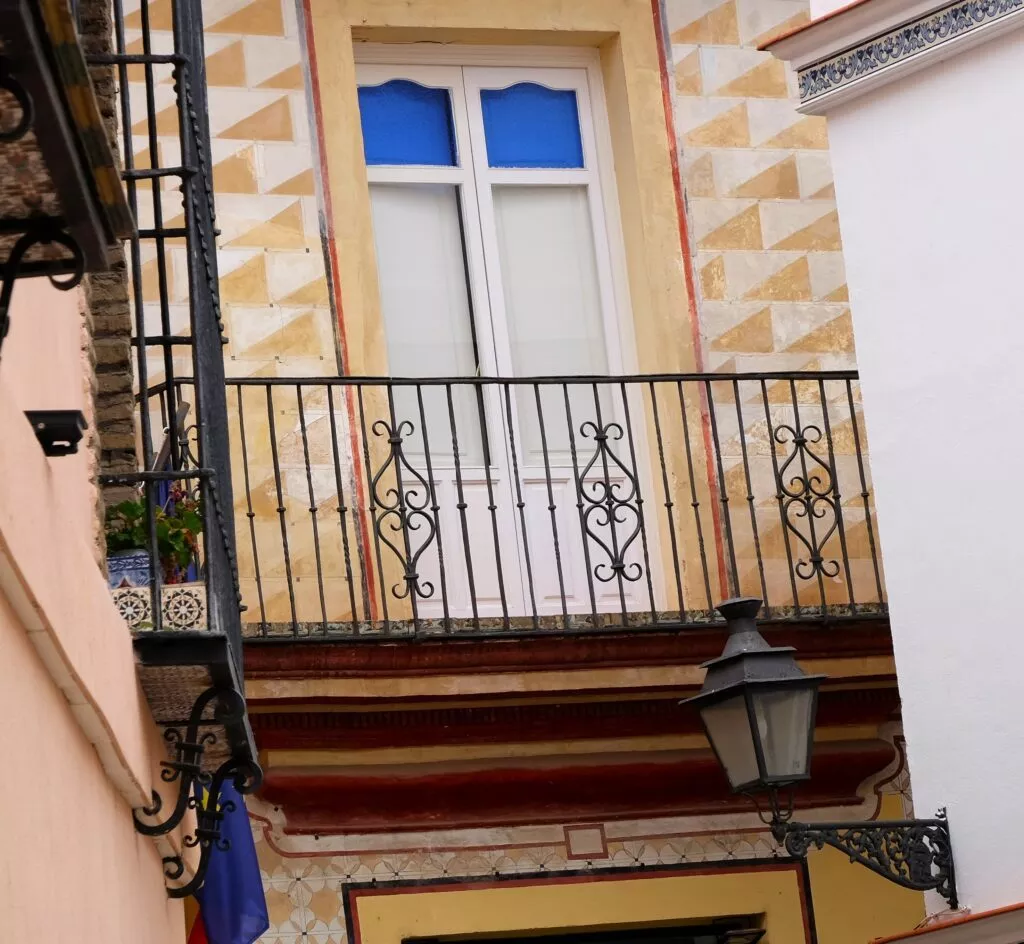
Tapas and flamenco in Santa Cruz
Where to see flamenco in the historic center of Seville?
In the Santa Cruz district, there is a flamenco tablao which is a real treasure. The Tablao Flamenco Los Gallos is the oldest in the city and one of the oldest in the world.
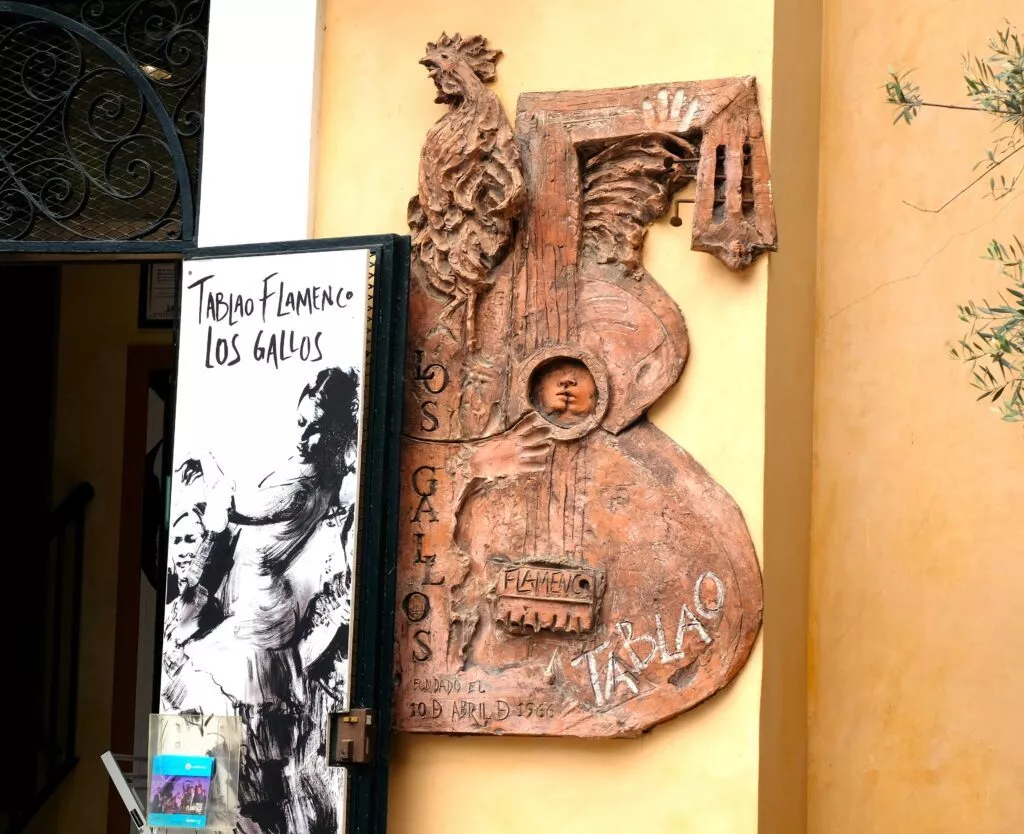
The quality of its shows, throughout its 60 years of existence, has allowed Tablao Los Gallos to be considered one of the most recognized and prestigious internationally.
You can click on the link to find out more and/or book a show online: Tablao Flamenco Los Gallos
Where to have lunch?
Here are 2 ideas for a good lunch:
First of all, a nice little address from a freiduria. This is a great place for a fried fish lunch, to eat in or take away. Despite its name, we eat fish there 🙂 .
An ideal place to eat good food, with your fingers, while continuing to stroll through the neighborhood streets.
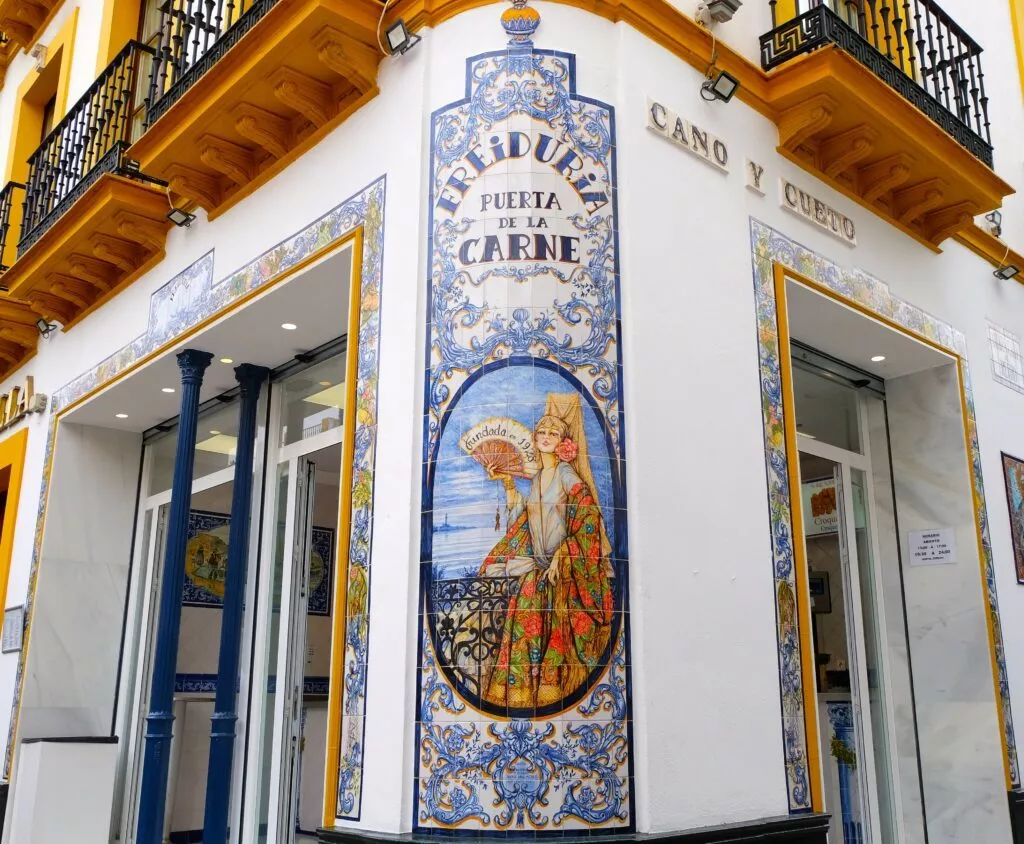
Here is the exact location of La Freidura Puerta de la Carne.
Then, the second proposal is: Taberna La Sal
The budget is higher for this lunch, but it is an opportunity to have lunch in an alley with absolutely tasty dishes.
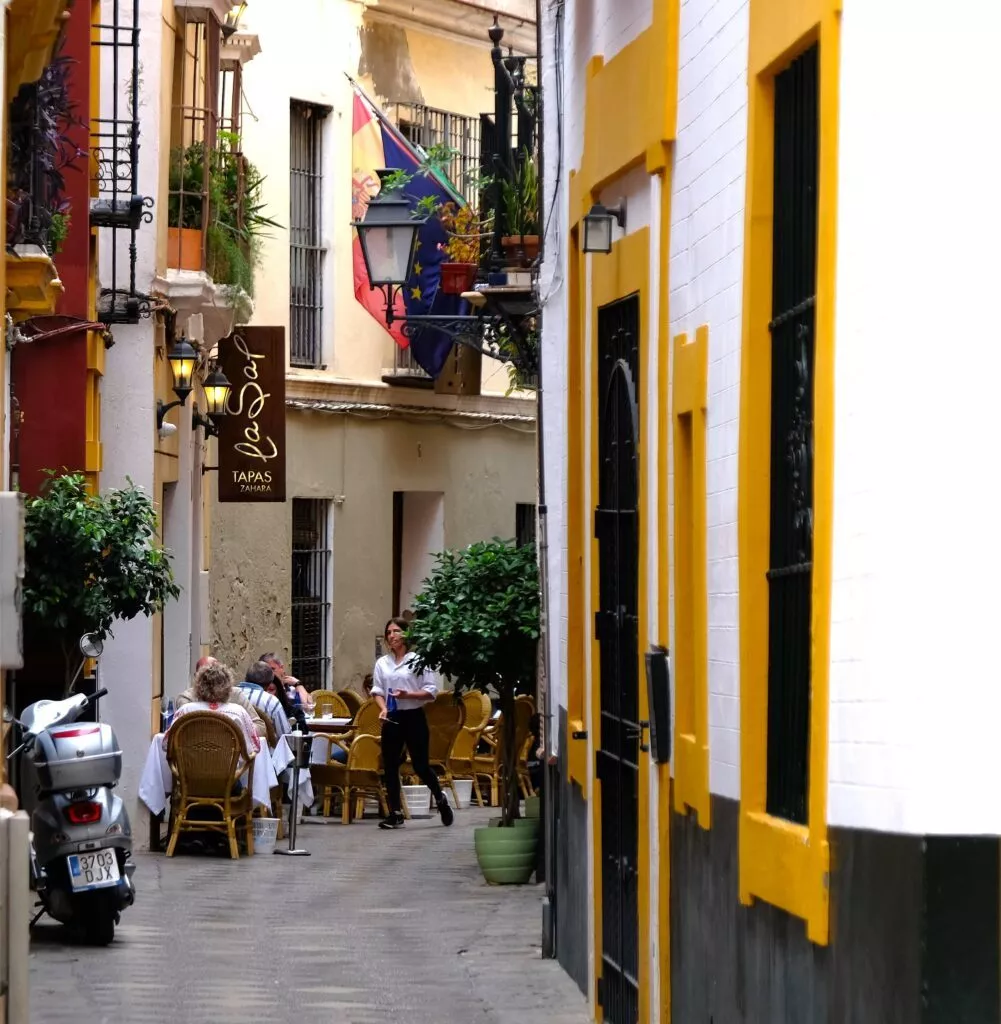
Here is the exact location of La Taberna la Sal.
English-speaking guide to visit Santa Cruz, the Juderia and other parts of Seville
For those who wish, there is a great English-speaking guide, Victor, who offers several options for private tours of Seville.
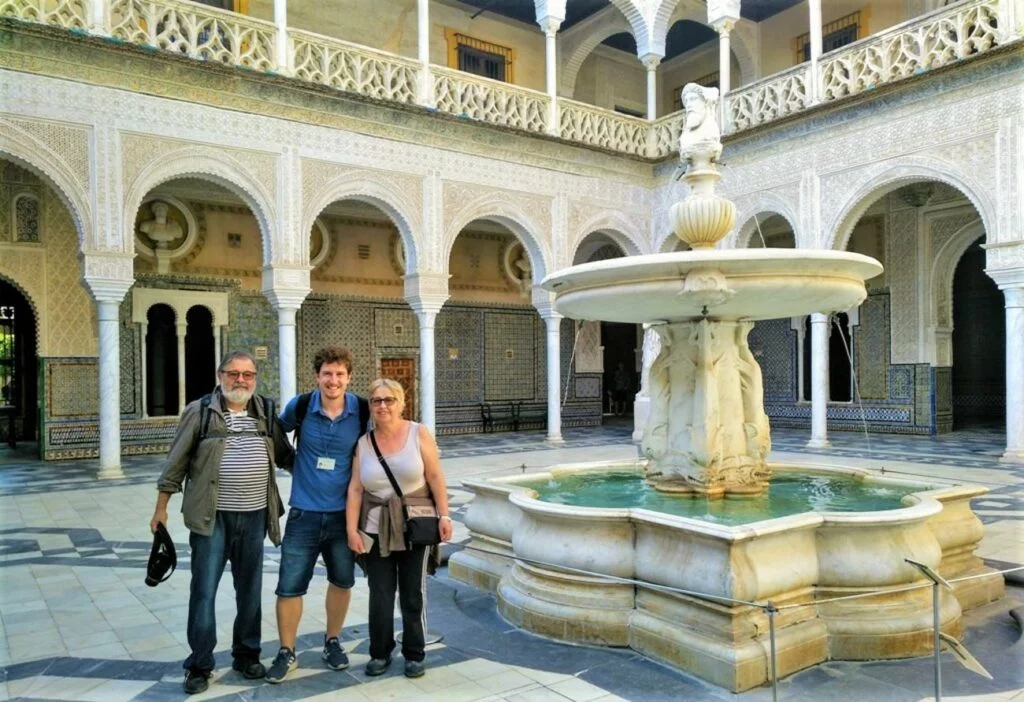
If you are in the western part of the Costa del Sol and would like an excursion to Seville, you can use the following link to book a tour from Torremolinos, Mijas or Benalmadena.
Book accommodation in Seville
To book accommodation in Seville at the best price, it’s advisable to book well in advance.
Note: if you’re coming during the Seville Fair, it’s advisable to book even further in advance.
Since we have just traveled through the Santa Cruz neighborhood and the ancient juderia, here is a hotel in its center that is both incredible and wonderful.
This hotel, by its size and its unique structure, can appear as a small village in the historic center of Seville.
It offers travelers 134 rooms…absolutely all different from each other. Everyone reaches their room through more than 40 courtyards, gardens, tunnels and labyrinthine interior lanes, richly decorated in a classic style.
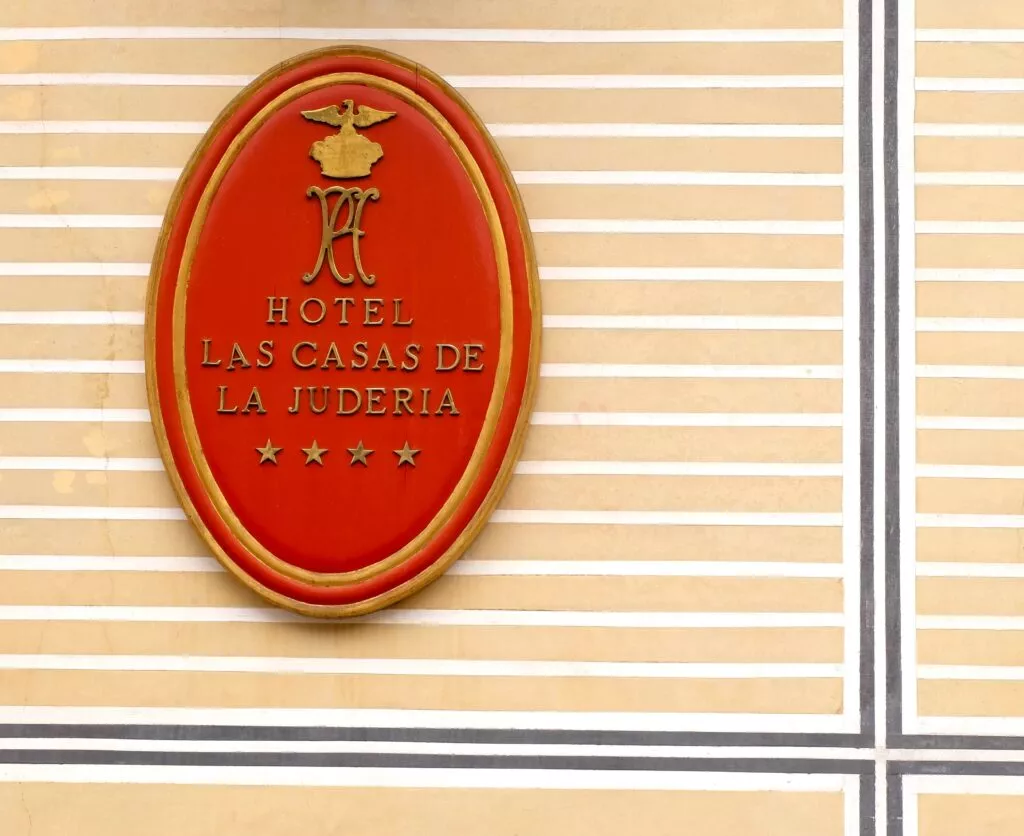
The hotel also offers a spa, a thermal station…and a rooftop swimming pool.
Here is the link to the Las Casas de la Juderia hotel, to see the photos and/or book.
Below, you will find all the accommodation that can be found in Seville and for which you can book online:
Booking.com
Book activities in Seville
Some useful links (car hire, other ideas for visits)
Easy and economical bookings
What to see in Seville after the Santa Cruz district
Seville, the Andalusian capital, is a city of incredible wealth and is worth several days of visiting.
Here are several ideas to continue your visit to Seville:
- Visit the centre of Seville and the Arenal district on foot:
- Cathedral
- Giralda
- Alcázar
- Macarena Basilica
- Plaza de España
- Maria Luisa Park
- las setas – Metropol Parasol –
- Church of the Divine Saviour
- the bullring
- Postigo Abd-el-Aziz
- Torre de Oro
- Join the popular district of Triana, to discover some wonders including:
- the wonderful covered market of Triana
- Betis street
- Santa Ana Church
- the emblematic Isabelle II bridge
- the Carmel chapel
- the callejón de la Inquisición
- Plaza del Altozano
- Discover the unusual and secret Seville.
Continue your trip to Andalucia
Antequera
Antequera is nicknamed the “convent city” with its 33 religious buildings. This city, in the center of Andalucia, is the crossroads between Seville, Cordoba, Granada and Malaga.
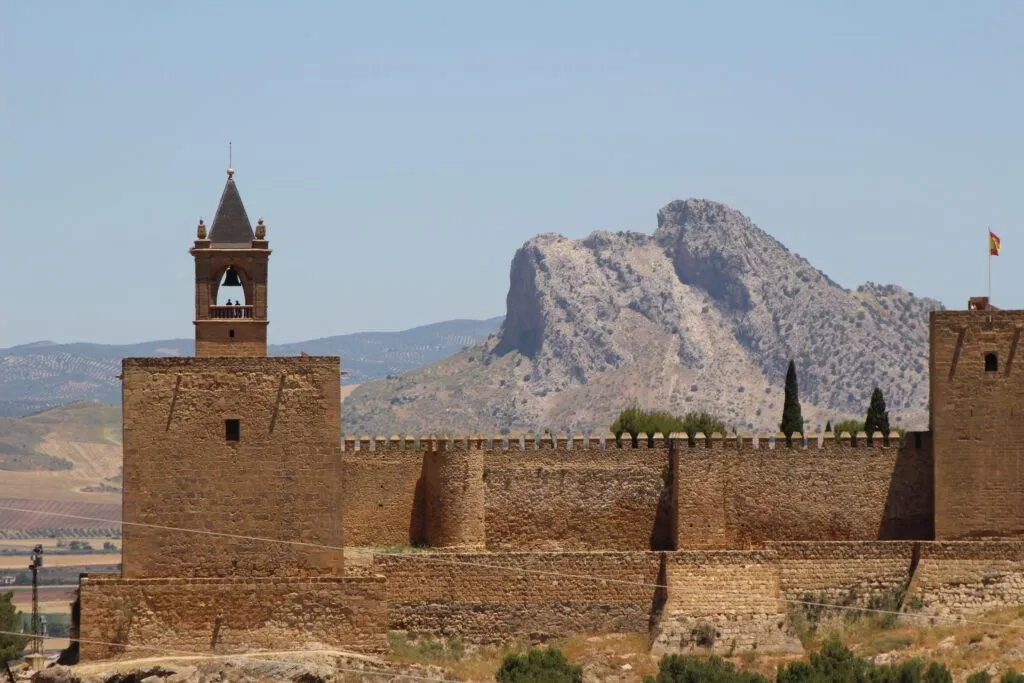
In addition, it offers travelers an incredible number of sites to discover among its monuments – churches, prehistoric dolmens, its alcazaba – and its natural environment (the Peña de los Enamorados, the El Torcal Park, the Fuente de Piedra lagoon).
Here is the link to visit Antequera.
Cordoba
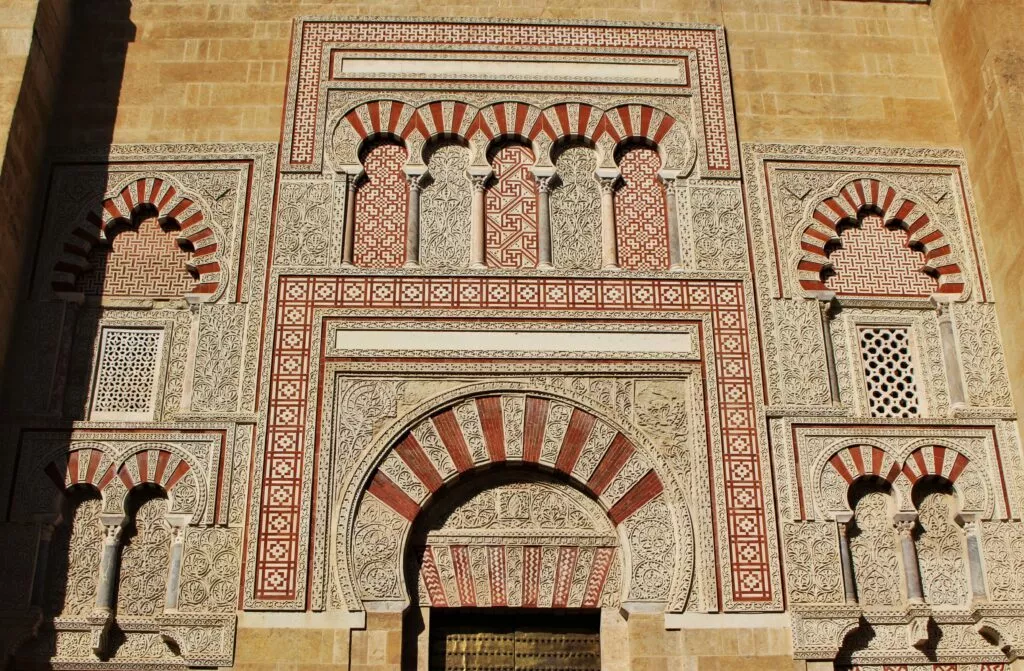
In this link, the monuments and districts to see in Cordoba.
Granada
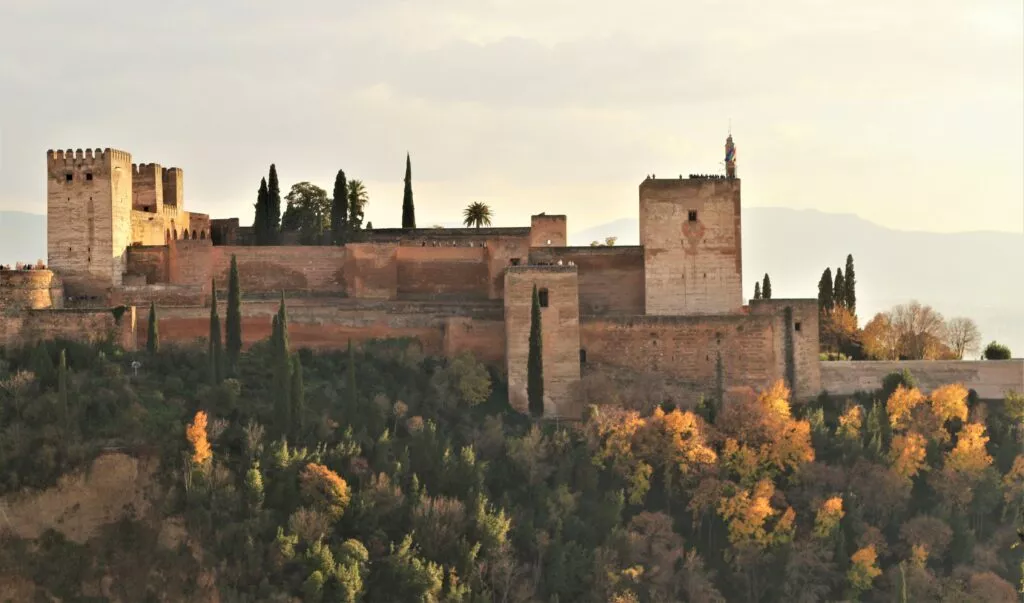
In this link, the monuments and districts to see in Granada.
In the following link you will find other beautiful sites to discover, see the blog articles about Andalusia.
Here is the link to receive our newsletter from the blog andaluciamia.com
The latest articles on Andalucia
-
Interactive map of Andalucia with best places to see
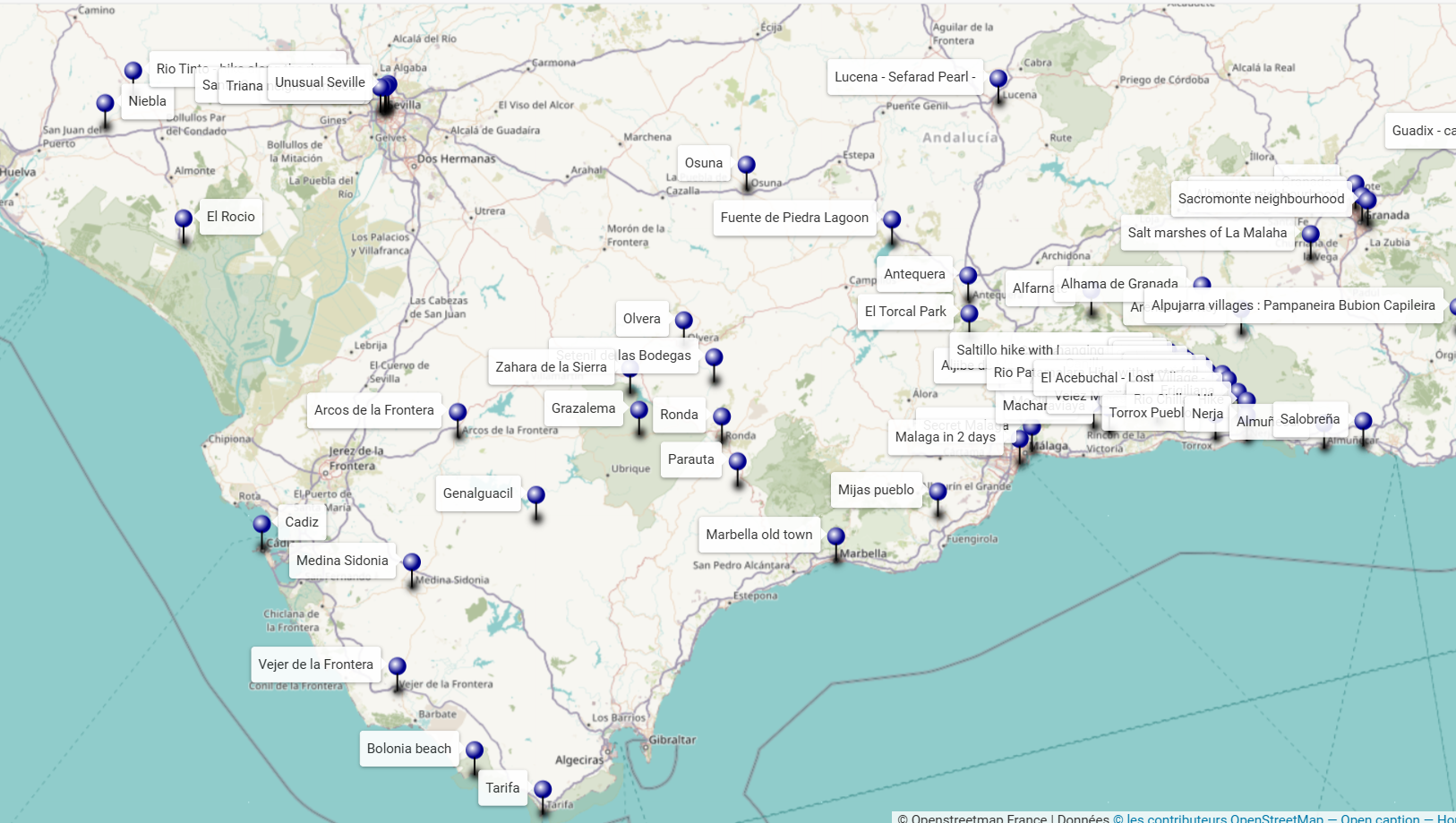
An interactive map of Andalucia to discover the sites to see around your holiday destination or to prepare a tour or road-trip.
-
What to see in Parauta and its enchanted forest ?
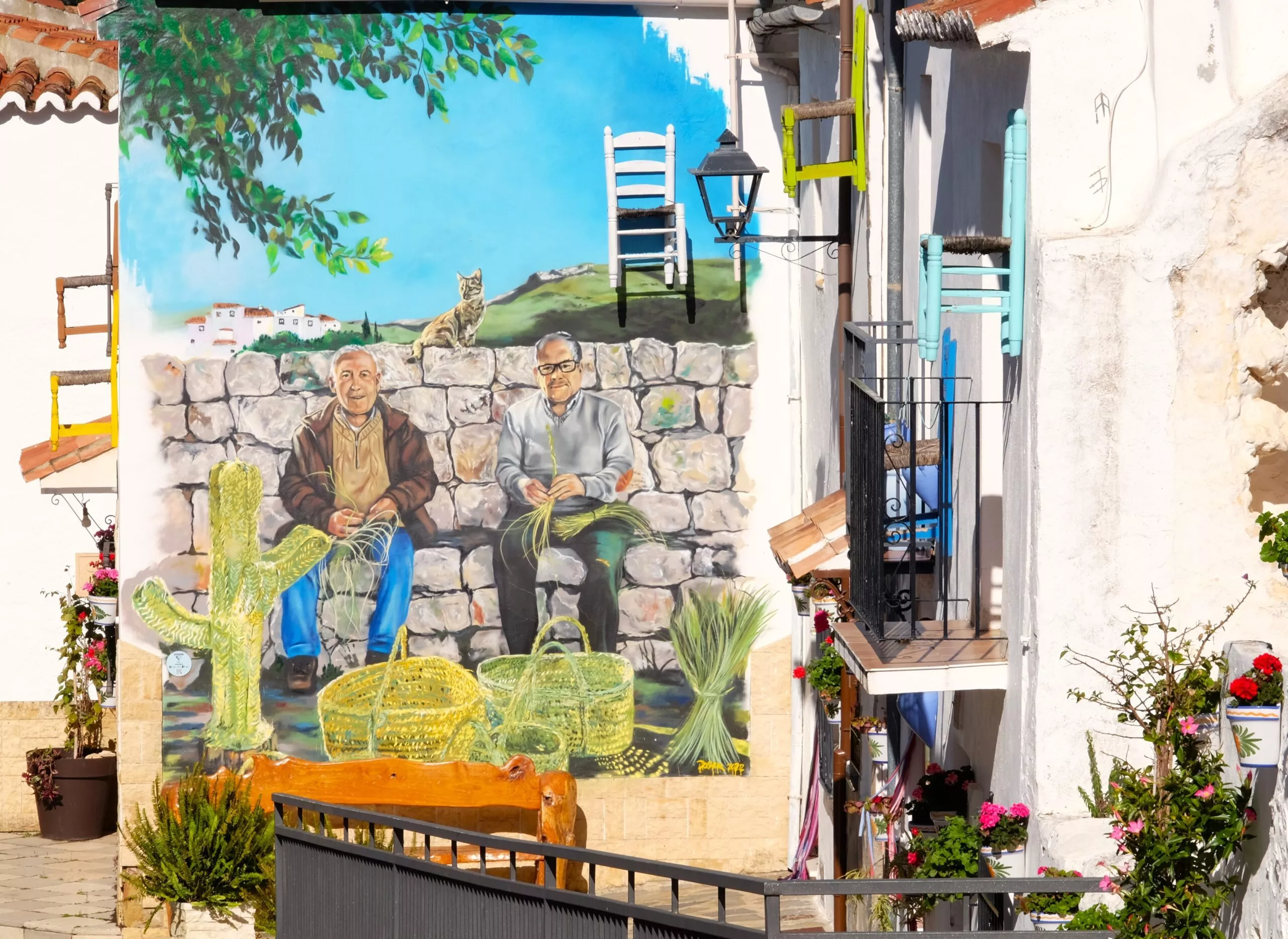
All the essential things to see in the wonderful village of Parauta and also in its very curious enchanted forest, el bosque encantado.
-
Genalguacil – what to see in the Vizier’s beautiful gardens
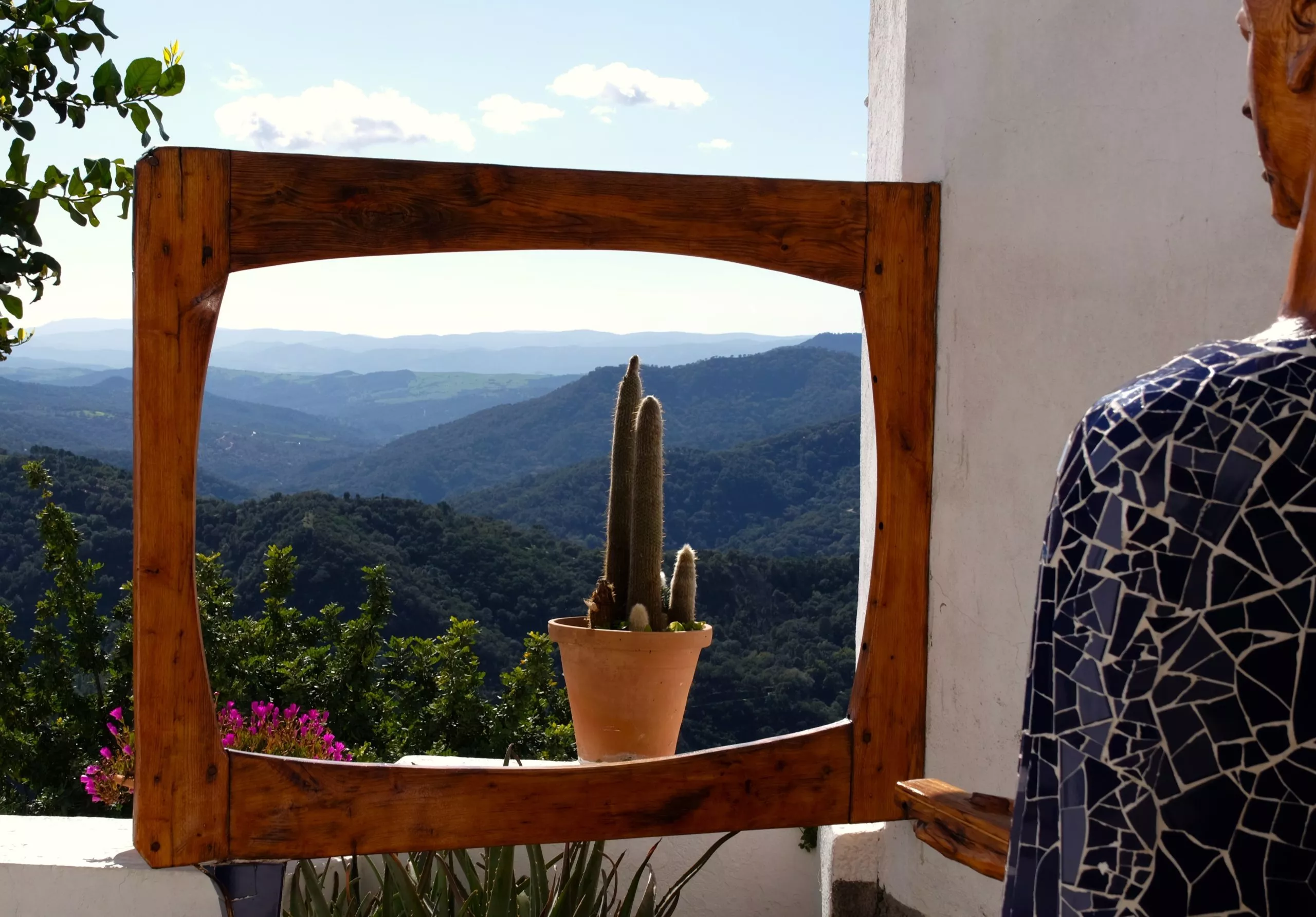
Here are all the essentials to see in the incredible village-museum of Genalguacil. This is an opportunity to discover the Genal Valley.
